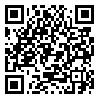Volume 10, Issue 4 (10-2006)
IBJ 2006, 10(4): 209-213 |
Back to browse issues page
Download citation:
BibTeX | RIS | EndNote | Medlars | ProCite | Reference Manager | RefWorks
Send citation to:



BibTeX | RIS | EndNote | Medlars | ProCite | Reference Manager | RefWorks
Send citation to:
Shahbazi-Gahrouei D, Roufeh M, Tavakoli M B. Gadolinium-Diethylenetriaminepenta-Acetic acid Conjugated with Monoclonal Antibody C595 as New Magnetic Resonance Imaging Contrast Agents for Breast Cancer (MCF-7) Detection. IBJ 2006; 10 (4) :209-213
URL: http://ibj.pasteur.ac.ir/article-1-256-en.html
URL: http://ibj.pasteur.ac.ir/article-1-256-en.html
Abstract:
Background: The monoclonal antibody, C595, against breast cancer cell line was conjugated with cyclic anhydride gadolinium-diethylenetriaminepenta-acetic acid (Gd-cDTPAa) to produce Gd-DTPA-C595 and used as specific breast cancer cell line (MCF-7) contrast agents in magnetic resonance imaging (MRI). Methods: After incubation of breast cancer cell line (MCF-7), with different contrast agents (Gd-DTPA-C595, Gd-DTPA, Gd-H and GdCl3) at 37°C for 12 h and twice washing, the T1 relaxation times and the signal enhancement of washing solutions of different contrast agents are examined by nuclear magnetic resonance and results are compared. The percent of Gd that attached into the cell membrane of MCF-7 was also measured by UV spectrophotometer. Results: The data indicate that the T1 relaxation of washing solutions at 11.4 Tesla (500 MHz) in Gd-DTPA-C595 was greater than in Gd-DTPA solutions and was much greater than in control. These conjugates (Gd-DTPA-C595) show high specificity for breast cancer cell line (MCF-7). The gadolinium concentration in washing solutions measured using UV-spectrophotometer showed no gadolinium attached into the cell membrane in the GdCl3 as control. Conclusion: Good cell membrane uptakes of Gd‑DTPA-C595 indicate selective delivery of this agent into the breast cancer cell membrane and have considerable potential in diagnostic MRI.
Type of Study: Full Length/Original Article |
| Rights and permissions | |
 |
This work is licensed under a Creative Commons Attribution-NonCommercial 4.0 International License. |







.png)
